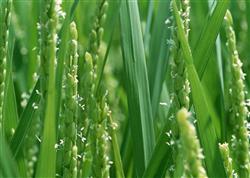Symptoms of Zinc deficiency in Rice and skillful Application of Zinc Fertilizer in Rice Field

Zinc is one of the necessary trace elements in the growth and development of rice. Zinc deficiency in rice will show obvious symptoms. Due to zinc deficiency, chlorotic yellow and white spots, upper reddish-brown spots and irregular patches appeared at first in the midvein area of the lower leaves, then gradually enlarged as reddish-brown stripes, changed to reddish brown dry from the leaf tip down, and appeared successively from the lower leaf to the upper leaf. The speed of leaf emergence of the diseased plant is slow, the new leaf is short and narrow, and the leaf color is lighter, especially near the basal midrib. The leaf occipital distance of seriously diseased plants was shortened or dislocated, obviously dwarfed and clustered, rarely tillered, and often showed uneven performance in the field. The roots are old and brown. The application of zinc fertilizer in zinc-deficient paddy field can significantly increase yield and improve quality. But the application of zinc fertilizer is very scientific. Unreasonable application will not only waste fertilizer, but may also lead to a reduction in yield. Therefore, it is necessary to master the following technical requirements for the application of zinc fertilizer in rice fields: 1. It can only be applied in zinc-deficient rice fields. The critical index of available zinc in the soil suitable for rice growth is 0.5mg/kg. When it is lower than this index, the effect of applying zinc fertilizer is good. In general, calcareous soil is rich in calcium and has high PH value, and available zinc is easy to combine with carbonate or hydroxide to form zinc carbonate or zinc hydroxide precipitation, so it is often deficient in zinc; in paddy fields with strong reduction, it is easy to lack zinc; in paddy fields with long-term application of nitrogen and phosphorus fertilizers, available zinc will also decrease. Zinc fertilizer should be applied to the above types of paddy fields. 2. Apply a proper amount. Zinc sulfate is mostly used to apply zinc fertilizer in paddy field, and 1~1.5kg is generally applied per mu. Because zinc fertilizer has obvious after-effect, the zinc fertilizer applied in the first season can still increase the yield of rice in the next season, so zinc fertilizer does not need to be applied every year, usually once in 2 ~ 3 years. 3. Zinc fertilizer should be applied early. The application of zinc fertilizer in seedling field has high utilization rate and good effect. It can be either base or sprayed. It is best to apply zinc fertilizer in the field when raking the field. 4. Apply evenly. In order to spread zinc fertilizer evenly, zinc fertilizer can be mixed with physiological acid fertilizer. However, zinc fertilizer should not be mixed with phosphate fertilizer to avoid the formation of zinc phosphate which is difficult for rice to absorb and use and reduce the fertilizer efficiency.
- Prev

Characteristics of Fertilizer requirement and fertilization techniques during Rice growth period
1. The characteristics of fertilizer requirement of rice nitrogen, phosphorus and potassium are the nutrient elements needed by rice but lacking in soil. Generally, for each 100kg production of rice, it is necessary to absorb nitrogen 1.6~1.9kg, phosphorus 0.8~1.3kg and potassium 1.8~3.8kg, and the ratio of nitrogen, phosphorus and potassium is about 1RV 0.5 1.8~3.8kg. Nitrogen is the most from turning green to tillering stage.
- Next

Opinions on the Control of Disease and Cordyceps in Rice Field
Rice black-streaked dwarf disease in southern China is a viral disease mainly transmitted by white-backed planthopper, which mainly harms major food crops such as rice and corn. Once the crops are susceptible, the plants are dwarfed, the tillers increase, and the diseased rice can not heading and fruiting in the later stage of growth, even no grain harvest. It is a serious threat to the safety of grain production in our county. For science.
Related
- The first cup of black tea in spring, the flavor and history of tea gardens in Kenya, Africa
- The computer can not only choose potatoes, but also grow tea rice. AI will grow winter oolong tea champion.
- It is not only the inflated tea bitten by insects, but also engraved with the four seasons tea in Beipu.
- The Oriental Beauty Tea Festival in Zhuxian County takes the stage at the weekend to experience the plus-size feast of oil tea.
- & quot; Oriental Beauty Tea & Exploration of Emei in Hsinchu, the hometown of quot;
- The new variety of strawberry "Tainong 1" dessert is the first choice with mellow aroma. Crimson gorgeous
- History of Tea in Taiwan: from Wild Inner Mountain to Export Tea Garden
- Two types of Taiwan Oriental Beauty Black Tea won the British three-Star Award for Childhood Tea Xiang Zhang Jiaqi changed from pilot to champion tea maker.
- Banana species and varieties: the planting history of Taiwan Xianren banana and dwarf banana is long, is banana disease resistant?
- Coffee planting Technology: Qianjie Coffee from Seedling to harvesting

